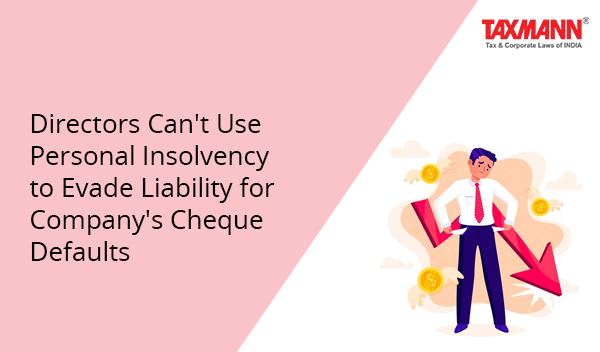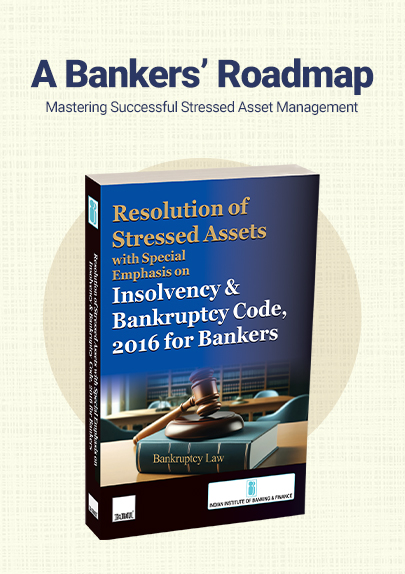Directors Can’t Use Personal Insolvency to Evade Liability for Company’s Cheque Defaults
- Blog|News|FEMA & Banking|
- 2 Min Read
- By Taxmann
- |
- Last Updated on 11 January, 2024
Case Details: Ashok B. Jeswani v. Redington India Ltd. - [2024] 158 taxmann.com 187 (Madras)
Judiciary and Counsel Details
-
- Dr. G. Jayachandran, J.
Facts of the Case
In the instant case, the Petitioners were directors of accused company. They were held guilty under section 138 of the Negotiable Instruments Act, 1881 by Trial Court. Trial Court sentenced petitioners to undergo simple imprisonment for a period of nine months and to pay jointly cheque amount as compensation to complainant.
Later, the Petitioners preferred an application to suspend sentence, pending appeal. Session Judge allowed application for suspension of sentence on condition to deposit 20 percent of compensation amount.
The Petitioners have not complied condition, instead filed a memo reporting pendency of insolvency proceedings under section 94 of Insolvency and Bankruptcy Code, 2016 (IBC) before NCLT and moratorium provided under IBC for insolvent.
Those memos were rejected by Session Judge. Consequently, against rejection order, instant petition under section 484 of CrPC was filed. It was noted that application by petitioners were debtors application under section 94 of IBC and it was filed after they were found guilty for offence under section 138/141 of the Negotiable Instruments Act, 1881.
In addition, if the interim moratorium under Section 96 of the IBC were extended to the petitioners, who represent a company not currently undergoing the resolution process under the Code, the implicated company would be left without a natural person to act on its behalf.
Consequently, the insolvency of the directors, who are legal entities liable for penal action, would potentially be shielded from prosecution. Ultimately, any discharge order granted in the application of these two petitioners could also extend to cover the debts owed by their company to the complainant.
High Court Held
The High Court observed that directors as signatory or guarantor or person responsible for affairs of company, which has issued cheque to discharge its liability, cannot have advantage of their application to declare them as insolvent as an individual to seek moratorium.
Thus, the High Court held that the instant petition under section 484 of CrPC was to be dismissed.
Disclaimer: The content/information published on the website is only for general information of the user and shall not be construed as legal advice. While the Taxmann has exercised reasonable efforts to ensure the veracity of information/content published, Taxmann shall be under no liability in any manner whatsoever for incorrect information, if any.

Taxmann Publications has a dedicated in-house Research & Editorial Team. This team consists of a team of Chartered Accountants, Company Secretaries, and Lawyers. This team works under the guidance and supervision of editor-in-chief Mr Rakesh Bhargava.
The Research and Editorial Team is responsible for developing reliable and accurate content for the readers. The team follows the six-sigma approach to achieve the benchmark of zero error in its publications and research platforms. The team ensures that the following publication guidelines are thoroughly followed while developing the content:
- The statutory material is obtained only from the authorized and reliable sources
- All the latest developments in the judicial and legislative fields are covered
- Prepare the analytical write-ups on current, controversial, and important issues to help the readers to understand the concept and its implications
- Every content published by Taxmann is complete, accurate and lucid
- All evidence-based statements are supported with proper reference to Section, Circular No., Notification No. or citations
- The golden rules of grammar, style and consistency are thoroughly followed
- Font and size that’s easy to read and remain consistent across all imprint and digital publications are applied






 CA | CS | CMA
CA | CS | CMA


